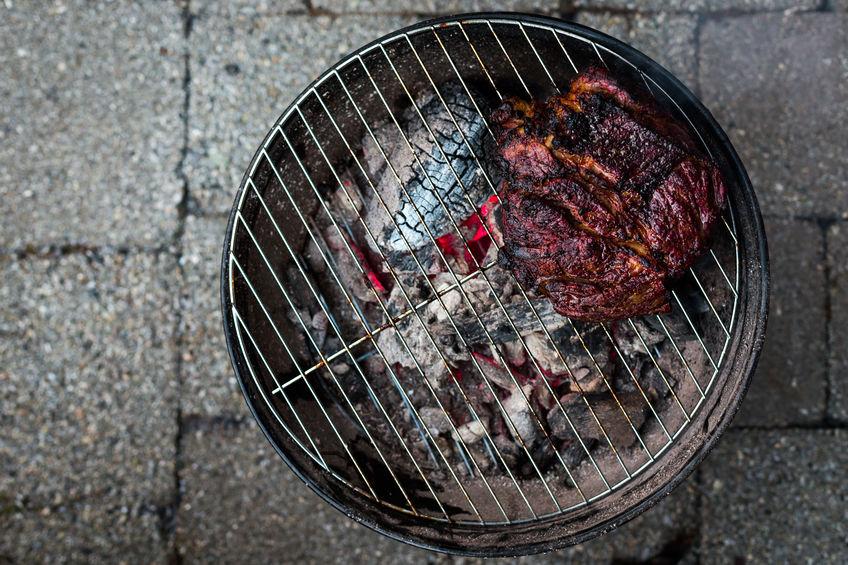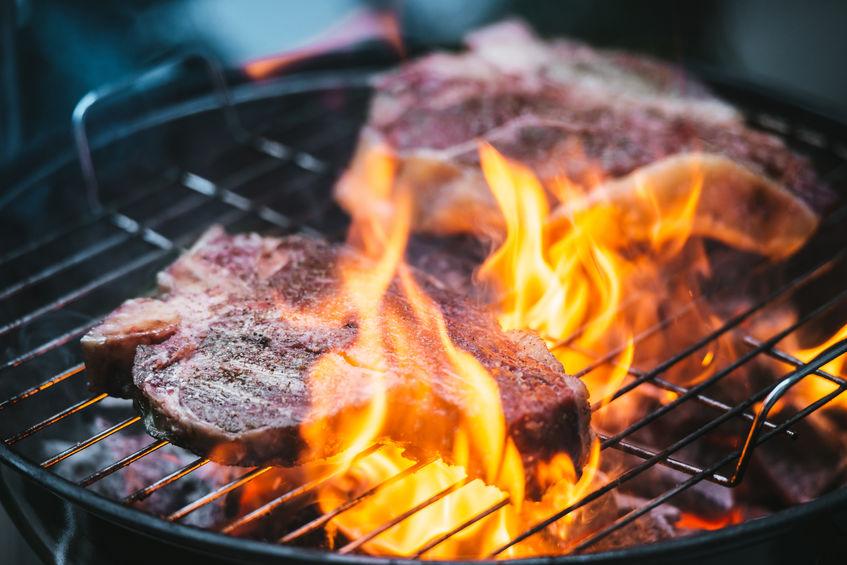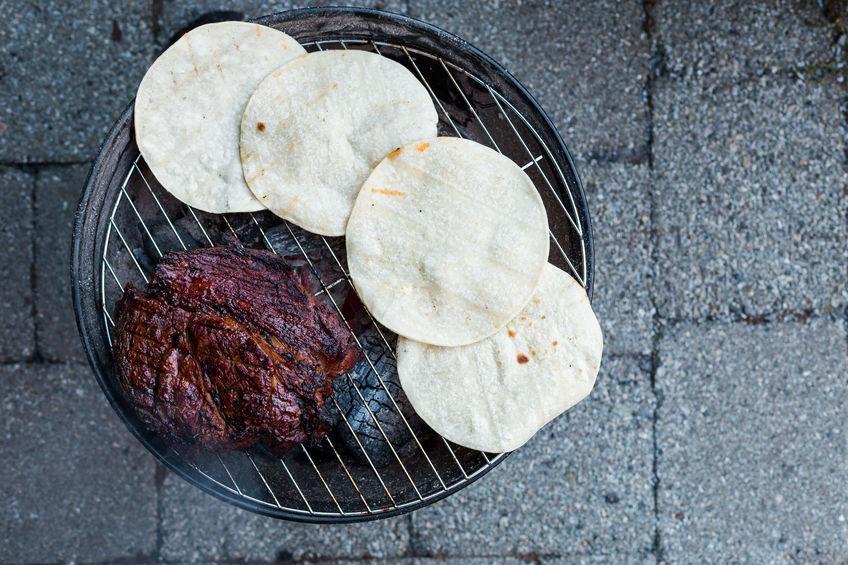This content has been archived. It may no longer be relevant

A hibachi tabletop grill is one of the most flavorful ways to cook at home.
Fueled by charcoal, a hibachi is convenient and highly portable.
You can cook most of your favorite meats and vegetables on a compact surface, making this style of cooking perfect for solo meals or family dining.
If you’ve never used a hibachi before, you’ll need to explore the benefits and downsides so that you can decide whether this type of grill is right for you.
Let’s explore the pros and cons of hibachi-style tabletop grilling with our best tips that will help you to get the best results.
The Pros of Using a Hibachi Grill

Hibachi grills, also known as teppanyaki grills, are a type of Japanese grilling device that has become popular in many other parts of the world.
These grills are known for their unique cooking style, where food is cooked on a flat griddle surface right in front of diners, creating a lively and interactive dining experience.
There are several pros to using a hibachi grill, including.
- Versatility. Hibachi grills are versatile and can cook a wide variety of foods, including meats, seafood, vegetables, and even noodles. You can grill, stir-fry, sauté, and even steam your food on a hibachi grill, allowing you to prepare a diverse range of dishes.
- Interactive Dining Experienc. One of the biggest advantages of using a hibachi grill is the interactive dining experience it offers. The grill is usually placed in the center of the table, allowing diners to watch the chef skillfully cook their food right in front of them. This creates a unique and entertaining dining experience that is perfect for gatherings, parties, or special occasions.
- Customizable Cooking. With a hibachi grill, you have control over how your food is cooked. You can adjust the heat levels, cooking times, and seasoning to suit your preferences, allowing you to create personalized meals. This makes it ideal for people with dietary restrictions or specific taste preferences.
- Fast Cooking. Hibachi grills are designed to cook food quickly due to their high heat output. This makes them great for busy weeknight dinners or when you need to prepare food in a hurry. The flat griddle surface also allows for even cooking and caramelization, resulting in delicious flavors and textures.
- Healthier Cooking. Since hibachi grills are typically used to cook food at high temperatures, they can help retain the natural flavors, juices, and nutrients of the ingredients. Additionally, the flat griddle surface allows excess fats and oils to drain away from the food, resulting in healthier meals with reduced grease.
- Easy to Clean. Hibachi grills are relatively easy to clean compared to other types of grills. The flat griddle surface can be wiped clean with a cloth, and any food debris or excess oil can be easily discarded. This makes hibachi grills convenient and low-maintenance.
- Portability. Many hibachi grills are compact and portable, making them suitable for outdoor use, camping, or picnics. You can easily transport them and set them up wherever you want to enjoy a delicious grilled meal.
In summary, hibachi grills offer versatility, interactive dining experience, customizable cooking, fast cooking, healthier cooking, easy cleaning, and portability.
These pros make them a popular choice for those who enjoy the unique experience of cooking and dining around a hibachi grill.
The Cons of Using a Hibachi Grill
While there are many benefits to using a hibachi grill, there are also some potential drawbacks that you should be aware of.
Here are some cons of using a hibachi grill:
- Limited Cooking Space. Hibachi grills are typically smaller in size compared to other types of grills, which means they may have limited cooking space. This can make it challenging to cook larger quantities of food or to accommodate larger groups of people. If you’re planning to cook for a large gathering, a hibachi grill may not be the most practical option.
- Smoke and Odor. Hibachi grills are typically used indoors, and the high heat used for cooking can generate smoke and strong odors from the ingredients, seasonings, and sauces. This can result in a smoky and aromatic dining environment, which may not be ideal for those who are sensitive to smoke or strong smells.
- Safety Concerns. Hibachi grills can reach very high temperatures, and the flat griddle surface can become extremely hot during cooking. This can pose a burn risk, especially for children or inexperienced users. Additionally, the open flames and hot oil used in hibachi grills require careful handling to prevent accidents or injuries.
- Maintenance. While hibachi grills are generally easy to clean, they may require regular maintenance to keep them in good condition. The flat griddle surface may require seasoning or special care to prevent rust or other forms of damage. Additionally, the gas or propane connections, if applicable, may need to be checked regularly for safety.
- Cost. Hibachi grills can vary in price, and some models can be relatively expensive compared to other types of grills. The cost of the grill itself, as well as any accessories or ingredients needed for cooking, should be considered when deciding on a hibachi grill.
- Cooking Skills. Cooking on a hibachi grill requires some skill and technique to achieve the best results. If you’re not familiar with teppanyaki-style cooking, it may take some practice to get used to the process and achieve desired outcomes. This may not be suitable for everyone, especially those who prefer simpler or more traditional grilling methods.
- Energy Source. Hibachi grills can be powered by different energy sources, such as gas, electricity, or charcoal. The type of energy source you choose may impact the cost of operation, availability, and convenience of using the grill.
In conclusion, while hibachi grills offer unique and enjoyable cooking experiences, they may have limitations such as limited cooking space, smoke and odor concerns, safety considerations, maintenance requirements, cost, and the need for cooking skills.
It’s important to carefully consider your needs and preferences before deciding if a hibachi grill is the right choice for you.
You’ve explored the pros and cons of hibachi grilling and decided that you want to give this unique cooking style a try.
We have some important tips that will help you to get the best results.
- Cook small pieces of meat and diced vegetables. Hibachi grills aren’t designed for slow cooking larger cuts of meat. Kebabs work best, or, you can cook smaller strips of steak, pork, and poultry like chicken breast.
- These grills are great for skewered vegetables. Mushrooms, bell peppers, onions, and zucchini work well. Diced tofu kebabs also come out amazing on a hibachi grill.
- Use a hibachi in a well-ventilated area. Cooking inside without adequate ventilation can be dangerous.
- Use the highest quality charcoal you can find. You may find lump charcoal to be too inconsistent in size to be useful for hibachi grilling. Try manufactured products like these Hardwood Briquettes from Duraflame Cowboy.
- Avoid cooking thick steaks on your hibachi. Unlike on a larger grill, you won’t get the same amount of heat to cook the meat thoroughly. Even at medium rare, it will simply take too long to get the inside meat up to temperature. Your steak should be no more than ¾ inch thick.
Always follow manufacturer safety instructions before using a hibachi grill.
Is This the Perfect Grill for You?

A hibachi grill may be a good fit for you if you enjoy interactive cooking experiences, like to entertain guests, and appreciate the unique flavors and textures that can be achieved with teppanyaki-style cooking.
If you have a smaller space or need a portable grill for outdoor use, a hibachi grill’s compact size and portability may also be appealing.
Additionally, if you are willing to invest in learning the skills and techniques involved in hibachi-style cooking, a hibachi grill may be a good choice.
However, a hibachi grill may not be suitable for everyone. If you prefer larger cooking surfaces for cooking larger quantities of food, prefer traditional grilling methods, or have limited experience with teppanyaki-style cooking, a different type of grill may be more appropriate.
Additionally, if you are sensitive to smoke or strong odors, or have safety concerns regarding open flames and high heat, a hibachi grill may not be the best option for you.
It’s important to carefully consider your own preferences, cooking needs, and lifestyle when choosing a grill.
You may also want to research different types of grills, compare their features, costs, and maintenance requirements, and read reviews from other users to help you make an informed decision.
